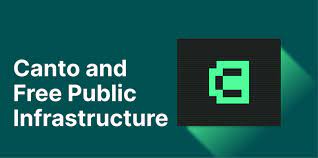
Since assuming the role of the President of Uzbekistan, Shavkat Mirziyoyev has been a pivotal figure in ushering in a new era of change and modernization for the country. Taking office after the death of his predecessor, Islam Karimov, in 2016, Mirziyoyev has embarked on a journey to transform Uzbekistan’s political, economic, and social landscape. This 600-word article explores the impact of Mirziyoyev’s presidency on Uzbekistan, highlighting the significant reforms he has initiated and the challenges and opportunities that lie ahead.
The Rise of Shavkat Mirziyoyev
Shavkat Mirziyoyev’s journey to becoming the President of Uzbekistan began with a long tenure in various governmental roles, culminating in his position as the Prime Minister from 2003 to 2016.
Background and Ascension
- Early Political Career: Mirziyoyev’s political career saw him taking on key administrative roles, where he gained extensive experience in governance.
- Transition to Presidency: Following the death of Karimov, Mirziyoyev was elected President, marking a new chapter in Uzbekistan’s political history.
Reformist Agenda Under Mirziyoyev
One of the hallmarks of Mirziyoyev’s tenure as President has been his commitment to implementing broad-ranging reforms across multiple sectors in Uzbekistan.
Economic and Social Reforms
- Liberalizing the Economy: Mirziyoyev has been at the forefront of driving market-oriented reforms, aiming to create a more open and diversified economy.
- Human Rights and Social Policies: There has been a notable shift in policies concerning human rights and social welfare, including efforts to improve the nation’s education and healthcare systems.
Strengthening Foreign Relations
Mirziyoyev’s foreign policy marks a significant departure from his predecessor’s, characterized by a more open and cooperative approach, both regionally and globally.
Fostering Regional Cooperation
- Engagement with Neighbors: A key focus of Mirziyoyev’s foreign policy has been strengthening ties with neighboring Central Asian countries, promoting regional stability and economic integration.
- Global Diplomacy: His administration has actively sought to build stronger relationships with major global powers, enhancing Uzbekistan’s international presence.
Challenges and Criticisms
Despite the positive changes under Mirziyoyev’s leadership, there are challenges and criticisms that highlight the complexities of governing a transitioning nation.
Balancing Reform and Tradition
- Pace of Reforms: Some critics argue that while reforms have been positive, the pace and depth of these changes may need to be increased to achieve more substantial progress.
- Political Freedom: Issues surrounding political freedom and the space for civil society and opposition in Uzbekistan remain areas of concern.
The Vision for Uzbekistan’s Future
Mirziyoyev’s vision for Uzbekistan is that of a modern, progressive country that is well-integrated into the global community while also maintaining its unique cultural identity.
Towards Economic Growth and Innovation
- Modernization of Economy: Central to his vision is the modernization of the Uzbek economy, fostering innovation, and creating a conducive environment for business and investment.
- Cultural Renaissance: Mirziyoyev also emphasizes the importance of preserving Uzbekistan’s rich cultural heritage and promoting it internationally.
Conclusion
The presidency of Shavkat Mirziyoyev represents a significant turning point in the history of Uzbekistan. His reform-oriented approach has set the country on a path towards greater economic liberalization, improved governance, and enhanced international relations. While there are challenges ahead, the direction under Mirziyoyev’s leadership offers a hopeful future for a more open and prosperous Uzbekistan.
For more informative articles keep visiting Article Blink.




